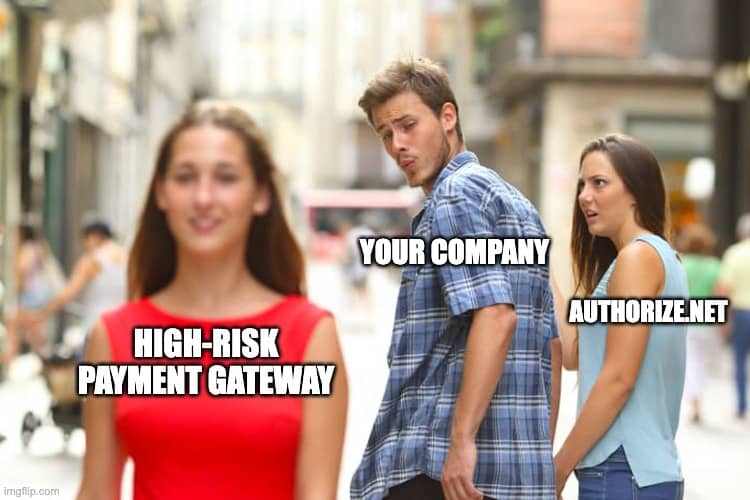Why Does Stripe Hold Funds?

Cashless payments grew steadily worldwide when a global pandemic hastened the trend. While a cashless society was never imminent pre-COVID, analysts expected that cashless transactions would someday become the norm. Fast forward to now, and some predict that online and in-store merchants will be nearly cashless before the end of this generation.
This isn’t necessarily bad, but there are still some glitches in the cashless system, such as payment companies withholding sellers’ funds. Did you know that Stripe holds funds? With Zenti, you’ll never worry about interrupting sales, frozen accounts, or withheld funds.
What’s Stripe?
Stripe is one of the world’s most recognizable names in eCommerce payment processing. Stripe offers payment solutions for both online and traditional brick-and-mortar businesses, including application programming interfaces (APIs) and payment processing. Stripe’s APIs and software are responsible for most US payment transactions.
Dozens of companies offer this same type of service. Still, Stripe’s reputation and recognizable name have garnered millions of eCommerce clients for the fast, legal, and efficient transference of funds from buyer to seller.
Stripe’s integral role in payment facilitation helps merchants receive customer payments smoothly, but this isn’t always the case. Stripe can withhold payment funds from sellers for several reasons.
Merchants signing up with Stripe must sign a contract that states they understand that Stripe reserves the right to temporarily freeze, delay, or hold funds. In some cases, Stripe may even deny access to withheld funds for reasons outlined in the contract. Merchants understand that these rules are in place, but it generates animosity when access to funds is interrupted.
So, why do merchants sign up with Stripe as a payment processing service?
Is Stripe the same as a merchant account?
No. Stripe doesn’t provide merchant accounts. Rather, Stripe is a PSP or payment services provider, also known as a 3rd-party payments processing service. PSPs perform many of the same activities as merchant account services providers, so account holders may not see any difference at first.
So, if Stripe isn’t a merchant account, is it a gateway or a processor?
Stripe: Payment gateway or payment processor?
Stripe isn’t one or the other. Stripe processes payments and includes payment gateways within its service. Stripe offers standalone payment terminals, point-of-sale (POS) systems, and a fully integrated system with terminal and POS systems together that can support both in-store and online transactions.
How does it work?
In any card-based transaction, whether in-store or online, customers provide credit card information and then learn if the card used has been accepted as payment.
Here are the steps with Stripe:
- The customer provides credit card details by swiping in-store or entering information online.
- The card information enters Stripe’s gateway.
- The payment gateway encrypts the credit card information.
- Then, as the payment processor, this information gets sent to the acquiring bank.
- The acquiring bank processes the purchase on Stripe’s behalf. (Here, Stripe is the merchant and the store owner is a sub-merchant under Stripe’s umbrella, meaning Stripe users don’t need a merchant account of their own.)
- The transaction then goes through one of the credit card networks and on to the issuing bank.
- The issuing bank, also known as the card-issuing bank or card issuer, can approve or deny the purchase.
- The approval or denial message then travels:
- From the card issuer back to the credit card network
- To the acquiring bank
- Back through the payment gateway
- An approval or denial message is sent to the merchant and customer.
- After the card-issuing bank finalizes the transaction, funds get deposited into the seller’s Stripe account, after which the seller can move the funds (known as a payout) into their business’s bank account (typically takes two business days for funds to finish processing).
Stripe payout timing occurs according to the schedule the business owner chooses. Payout schedule options include daily (Sunday evenings through Thursday evenings), weekly (on the day of choice; for instance, weekly on Fridays will pay out on Thursday evenings), or monthly on the date chosen (if the 31st is chosen, payouts default to the last day of the current month).
Business owners pay a fee for Stripe’s facilitation of each transaction. The necessary fee depends on where the transaction originates*, as there’s a difference between online and in-store purchases. Stripe charges a 2.9% fee plus 30 cents USD for all approved online transactions and a 2.7% fee plus 5 cents for all in-store transactions.
*The variance in fees between online and in-store transactions is a fail-safe in Stripe’s defense. In-store credit card purchases have a much lesser chance of becoming chargebacks, so the fee is more of a convenience charge for using Stripe’s services. On the other hand, online transactions can result in chargebacks for various reasons. The higher fee helps offset any loss Stripe may suffer in case of a chargeback for which the seller doesn’t have sufficient funds to cover.
Does Stripe offer direct deposit?
Yes, but not in the traditional sense of direct deposits. When you initiate a payout from your Stripe account to your business bank account, your payout goes directly to your bank account. However, this isn’t the same thing as a direct deposit. A direct deposit is one in which funds in one bank account are transferred into another, such as payroll going from an employer’s account into the employee’s account. However, Stripe isn’t a bank account, and Stripe doesn’t store the proceeds from your sales transactions.
Then how do Stripe “hold” sellers’ funds?
Stripe’s contract that merchants must sign outlines the various circumstances in which the platform can withhold merchants’ funds, such as:
- Temporary funds hold (can happen for multiple reasons)
- If Stripe terminates an account
- If Stripe freezes an account
Temporary holds are the most common. In a temporary hold, Stripe notifies the merchant that part of the proceeds of a transaction (or multiple transactions) is being held in light of activity and until the said activity has been investigated. During a temporary hold, Stripe asks the merchant to provide certain documents and holds the funds in question until the documents are provided. A temporary hold can happen for several reasons. The most important thing for sellers during a hold is to provide the information Stripe requests so the platform will release the hold. Do you need a merchant account or a high-risk payment gateway? Zenti is a high-risk payments solutions expert.
What to do so Stripe will release your held funds
If Stripe has placed a hold, there isn’t a fool-proof set of steps to get your funds released into your account balance. That said, some sellers have reported different techniques that offer successful outcomes, such as:
- Look up the relevant information in Stripe Docs. Being informed is pertinent when calling support.
- When calling Stripe Support to inquire about the hold, don’t complain. Instead, ask for help. Ask to speak to the department that handles temporary holds for frozen accounts.
- Write down what you learn from the customer support representative. Usually, Stripe wants additional information, including documents such as bank statements from your business bank account, complete with your account number. The faster you cooperate and submit the requested information, the sooner your funds will be in your bank account.
- After your funds get released, call customer service again and ask what you can do to help avoid a hold in the future so you can continue receiving payouts.
- Depending on your business’s stature, a long-term hold might mean you’ll need financial assistance to bridge the gap, such as a business line of credit or a bridge loan.
- If Stripe closes your account, you have two choices: stop accepting credit cards (which is impossible if you’re an eCommerce business) or look for a new processor.
If you weren’t, now you’ll most likely be labeled a high-risk business, meaning you’ll need a high-risk merchant account like Zenti to continue accepting credit card payments.
So, while Stripe is a beneficial service for some sellers, there are a host of disadvantages to using the platform as your sole payment processor.
Disadvantages of using Stripe to facilitate your store’s payments
Stripe’s a strong company, perfect for some businesses, but it isn’t right for every business. Before you sign up for a Stripe account, consider these disadvantages:
- Lack of stability PSPs is notorious for a high percentage of accounts with temporary holds or account freezes. Because accounts are aggregated under the Stripe umbrella, resolving issues is difficult. The longer it takes to release your funds, the harder it hits your cash flow.
- Account setup is complicated Do you know how to code? Unless you get Stripe’s pre-integrated version or your business has an in-house IT department (which most small businesses just don’t have), setting up a Stripe account is tough.
- The fee schedule can add up Stripe offers services as a monthly subscription, but many of the platform’s advanced features are add-ons. These add-ons are charged per transaction, which means whether you stay at a current subscription or scale up to the next, Stripe’s processing fees can price out even the best small-scale seller.
In addition to these Stripe drawbacks, if your business is considered high risk, Stripe simply won’t do business with you, to begin with.
How to prevent a funds hold on your Stripe account.
It’s a tough situation when you have to jump through hoops just to get access to funds you rightfully transacted with a customer for. A better strategy is to avoid getting a hold placed on your Stripe account, to begin with, right? Several tactics exist to keep your Stripe account in good standing, such as timely communication with your processor and keeping detailed records of all transactions. Some other strategies you can use include:
- Do your part to minimize fraud. Any fraudulent activity in your account, even when it’s not your fault, can throw a red flag and strain your relationship with your payment processor. This is why selling in marketplaces and to consumers with no fraudulent history is a good idea. This can be tough if you’re selling to a new target market, especially internationally.
- Monitor (and minimize) chargebacks. A chargeback now and then is common. Each business has its regular chargeback ratio. A surge in your chargeback ratio or the number of chargebacks or refunds your processor deems over a given limit can raise red flags and often incurs a temporary hold, funds freeze, or even account termination. Some processors require merchants to set up a reserve account if chargebacks occur. To do your part, ensure you stay on top of your chargeback ratio, know who your customers are, mail orders on time, and anything else that minimizes chargebacks against your account.
- Don’t add new, unrelated products or services. All payment processors, especially 3rd-party PSPs like Stripe and Paypal, are especially attuned to businesses that start selling new services or products unrelated to current campaigns. When signing on with a payment processor, you’ll list everything in your current business model, such as the products and services you currently offer customers. Advance notification is required if you want to try selling a new product or service. Processors become suspicious of your goals if you don’t, which can trigger funds hold, account freeze, or, in some circumstances, account termination.
- Try to maintain steady sales. This might seem counterintuitive. You would think that “sell as much as you can” would be a business owner’s mantra. And, of course, it is; however, a couple of months of typical sales followed by a few weeks of little to no sales activity followed by the best two weeks you’ve ever had can be a cause for alarm in the eyes of a processor. They could hold your proceeds or freeze the account until they know why the surge. This is another reason why constant, open lines of communication with your processor are key. Alert your processor to upcoming sales or product announcements, so it’s not a surprise when you do well. You’ll still likely have to produce documentation that proves the increase, but it helps.
Partnering with Zenti
Trusting your funds in the hands of a payment processor like Stripe, while it works for some businesses, could be devastating if your funds are held, or your account gets frozen. Zenti’s payment solutions specialists can help you get your very own merchant account. Don’t rely on the umbrella of a big name when you can take charge of your business finances with a high-risk merchant account with Zenti. Reach out to our payments experts today.
Read Next

Find out whether Authorize.Net works for high risk merchants, what restrictions you might face and how to get approved.

Get expert advice on selling CBD products on Shopify, including compliance tips and setting up secure payment options.

Find out why Square may deactivate merchant accounts and steps to resolve issues and maintain uninterrupted payment services.
Need a High-Risk Merchant Account?
Disruption-free payment processing at the best price for your situation, guaranteed.
Get Free Guidance Now!